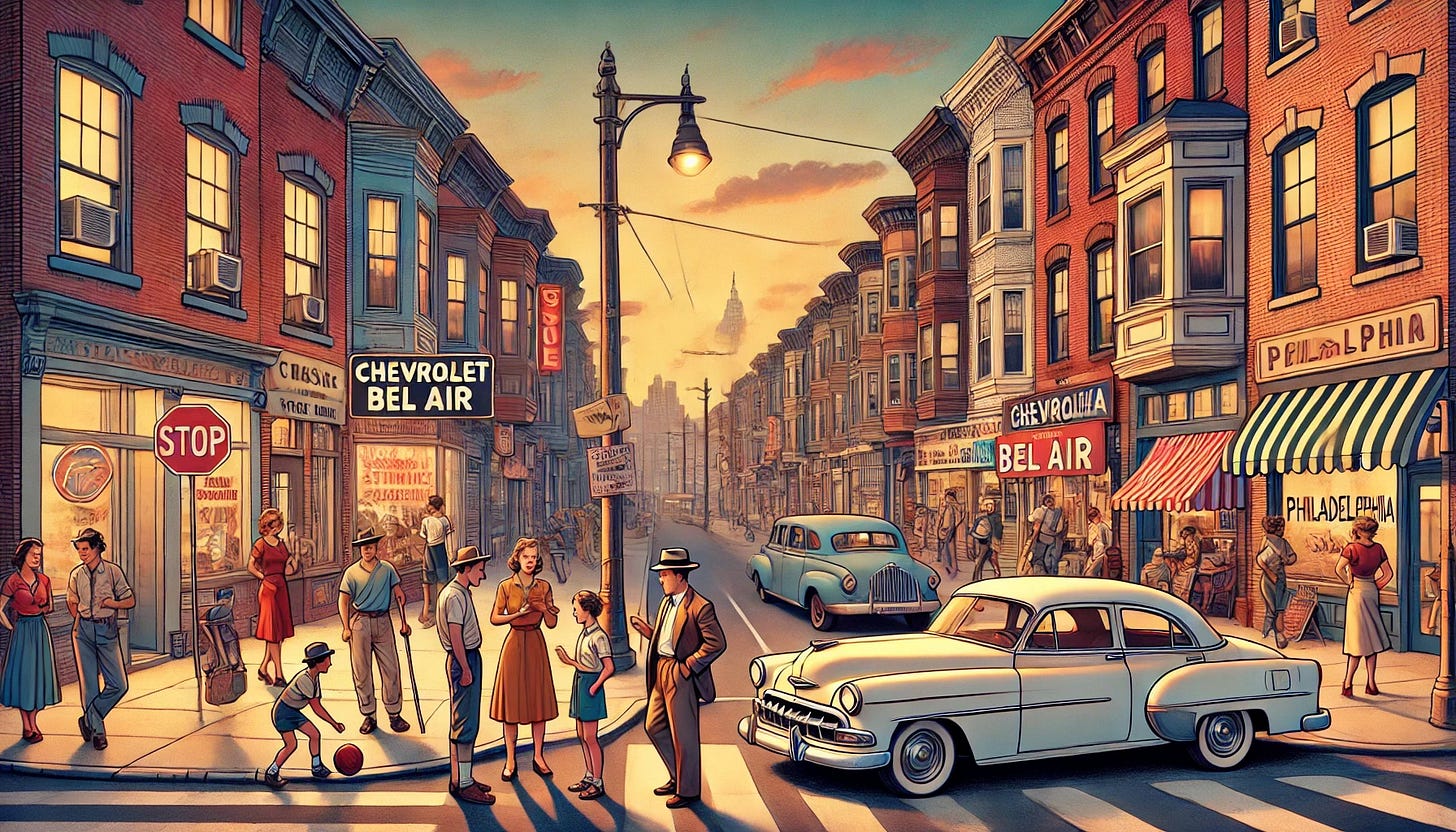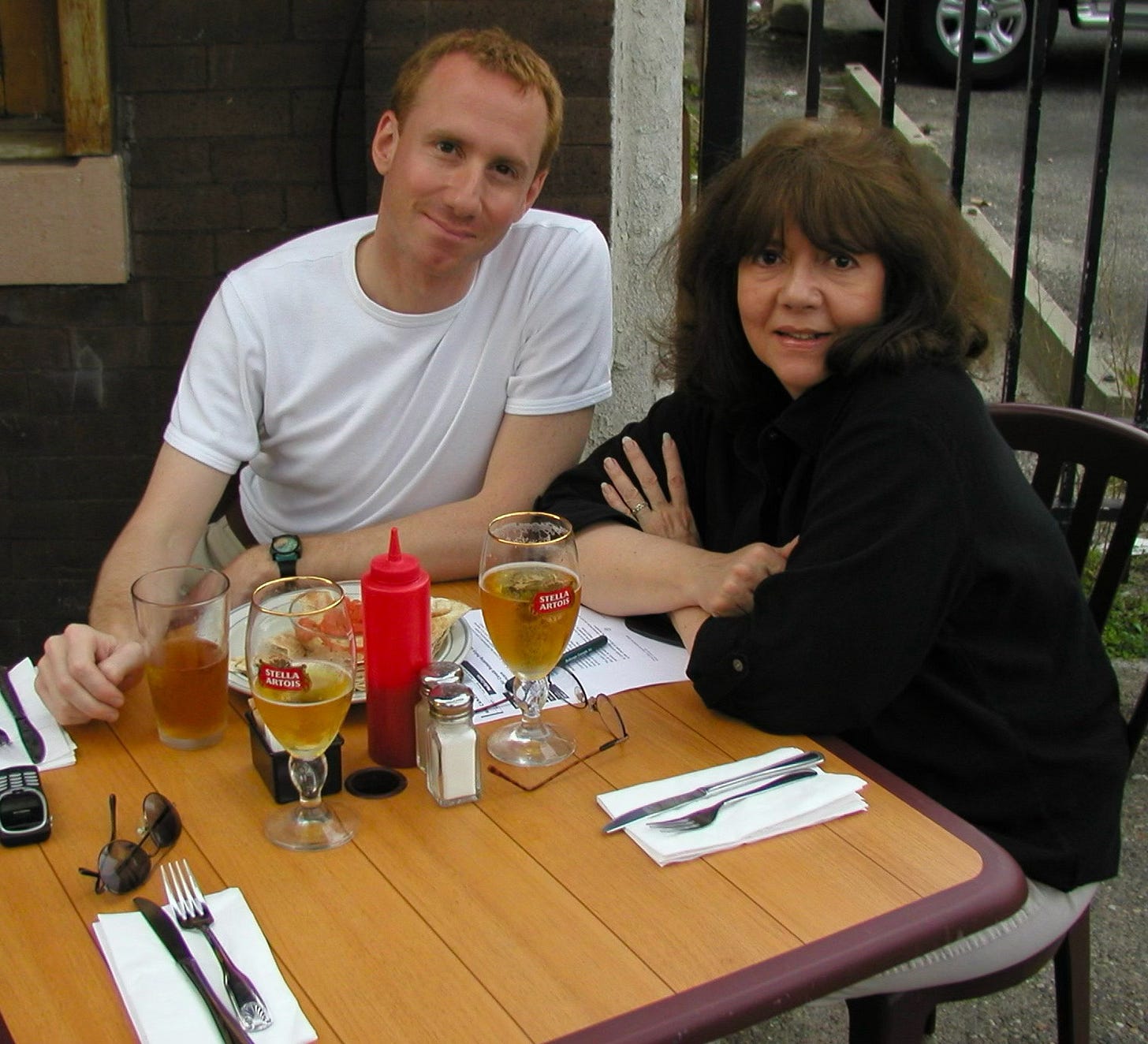Neighborhood
In today's America, where urban and rural are indistinguishable, the idea of a “neighborhood” is difficult to conjure.
Life in the Fifties, in the microcosm called a neighborhood went on relatively undisturbed as the unseen commonalities that held us all together proved impenetrable to outside influences. Ritual prevailed.
There was always an unofficial social center in the microcosm called a neighborhood, and many times, it was a barbershop like my father’s. It was a place to argue the impossible arguments of sports greatness, to commiserate on the death of a neighbor, to fuel or mediate petty rivalries, to use as a convenient first aid station and for me to garage my prized Schwinn Black Phantom fat wheeler.
No one came “out of the closet,” but you always remembered the woman with the short hair who wore men’s pants and shirts or the middle-aged guy who was impeccably dressed, kept to himself, and always kept fresh flowers in an impossibly well-appointed house. Cohabitation was immediate grounds to disown a daughter but not a son, and adults spoke in whispers about a friend or cousin and his “common-law wife.”
With the death of the century’s fifth decade, JFK ushered in the soon-to-be-infamous Sixties and energized the country. The Beatles and Dylan gave voice to the changes fomented at home and around the globe, and the Eisenhower years seemed sacrosanct when considering a model for innocence.
But teens have a way of making the worst of any situation, and we were no exception. Turf was defended, and slights were taken more seriously than intelligence should have allowed. There were no drive-bys but rather the nobler walk-ups, where you confronted your adversary for a contest mano—a-mano, where nobody died but you made your point. Paradoxically, your adversary often became a good friend.
We adhered like a magnet to the appeal of a fragile and angst-ridden James Dean and to a sneering Brando’s preternatural sense of defiance. Dean’s plaintive “you’re tearing me apart” in the celluloid bible of teenage unrest, Rebel Without a Cause, and Brando’s retort, “whatya got?” to the question, “what are you rebelling against?” in the film The Wild One, said it all. How could they have gotten it right on the screen and so wrong in real life? With life imitating art, our existence seemed validated.
Thankfully, the teen years were a ”phase”. They passed easily into memory as a teen became an adult and in more instances than most, became a near clone of their parents, demonstrating the values and idiosyncrasies of the family archetype. Not always, but in most instances. If not, how else could the personality of the neighborhood survive? And for good or bad, the recognizable qualities and characteristics of that geographic and cerebral mini-state survived and achieved more.
There were definite roles. Father was the breadwinner and had the final say in family matters. Mother was expected to have dinner on the table when Dad arrived home from work. Children were an extension of parents’ behavior and beliefs.
Though there were no McDonald’s or Pizza Huts, food played a bigger part in our lives than was realized at the time.
There was no Pizza Hut or Papa John’s, but there was always a tiny “pizzeria” or bar that made great pizza and were always run, not surprisingly, by Italian families. In the Fifties, a 12” round pizza cost 75 cents and a rectangular one, the Sicilian, almost twice as much pizza, cost $1.25. A roasted pork sandwich, sold in most of the bars, cost 80 cents and was sold unadorned save for the perfectly thickened and delicious jus lie and served on a freshly baked roll out of the oven of the tiny local bakery. We were living in a culinary Valhalla and never knew it.
Burgers were not the quotidian snack that McDonald's made, but cities usually had a signature sandwich that the natives swore by. In Philadelphia, it was the cheesesteak, thinly sliced top round quickly cooked on a flat-top grille and served with fried onions. Peppers or mushrooms were available, but they were not free, as were the onions.
There were some but not many ice cream “parlors” as ice cream sodas and cones were available at the soda counter at the corner pharmacy. We had the best chocolate soda available to us for a nickel.. The only problem was the pharmacist was the meanest man we had ever met and always admonished us to drink it fast and get out. But it was so good we tolerated him at least twice a week or more.
Mom always prepared dinner and as there were no “supermarkets”, she would spend her day at the local butcher, greengrocer and grocery stores hand picking what would be on the table that evening. If it was steak, the butcher would heft a huge side of beef onto the counters and Mom would show him the thickness she wanted, two 12 oz for Mom and Dad, 2 6 oz for the children.
Fish was usually gotten from the horse-drawn wagon operated by a fishmonger who knew his stuff. If you had to smell twice, it was rejected, if it smelled of the ocean, it was dinner. It always marveled me that in a kitchen that was perhaps 8 feet by 10 feet square, the phenomenal diners she could produce 7 days a week. And there were np “prepared food. She baked bread, made fresh pasta, all the accoutrements in that tiny space, 7 days a week every week. Culinary Valhalla indeed.





